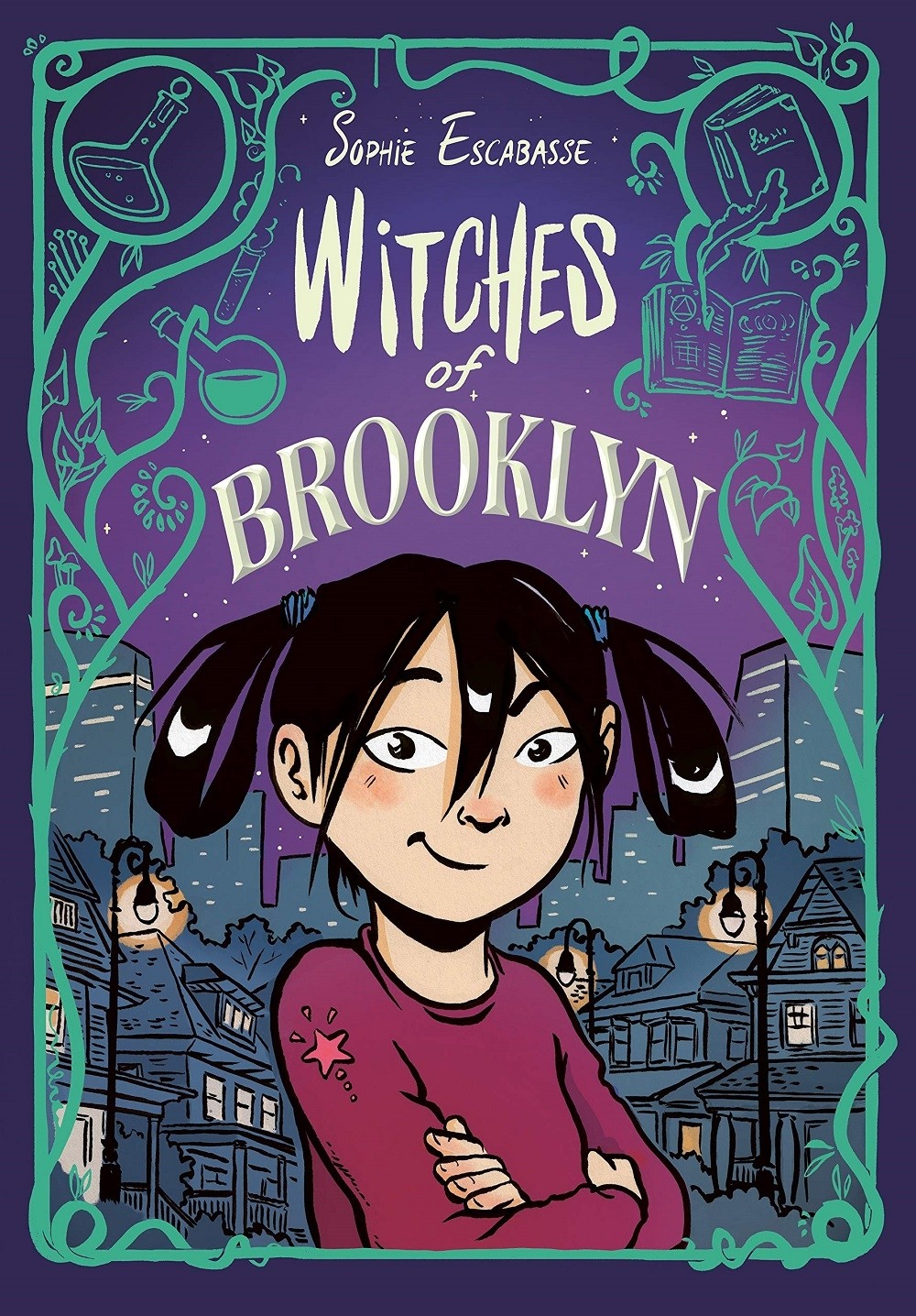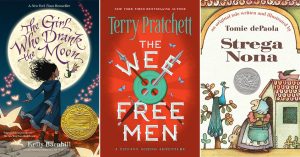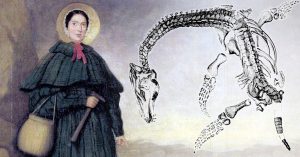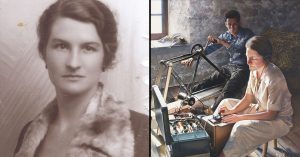Strict gender norms and fears of witchcraft pushed women out of a centuries-long tradition.
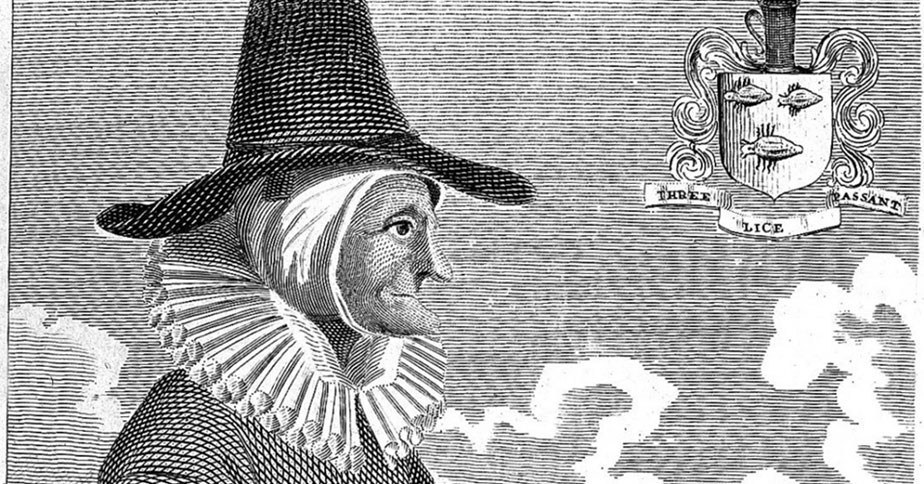 By Laken Brooks, Doctoral Student of English, University of Florida; this article is republished from The Conversation under a Creative Commons license.
By Laken Brooks, Doctoral Student of English, University of Florida; this article is republished from The Conversation under a Creative Commons license.
What do witches have to do with your favorite beer?
When I pose this question to students in my American literature and culture classes, I receive stunned silence or nervous laughs. The Sanderson sisters didn’t chug down bottles of Sam Adams in “Hocus Pocus.” But the history of beer points to a not-so-magical legacy of transatlantic slander and gender roles.
Up until the 1500s, brewing was primarily women’s work – that is, until a smear campaign accused women brewers of being witches. Much of the iconography we associate with witches today, from the pointy hat to the broom, may have emerged from their connection to female brewers.
A routine household task
Humans have been drinking beer for almost 7,000 years, and the original brewers were women. From the Vikings to the Egyptians, women brewed beer both for religious ceremonies and to make a practical, calorie-rich beverage for the home.
In fact, the nun Hildegard von Bingen, who lived in modern-day Germany, famously wrote about hops in the 12th century and added the ingredient to her beer recipe.
From the Stone Age to the 1700s, ale – and, later, beer – was a household staple for most families in England and other parts of Europe. The drink was an inexpensive way to consume and preserve grains. For the working class, beer provided an important source of nutrients, full of carbohydrates and proteins. Because the beverage was such a common part of the average person’s diet, fermenting was, for many women, one of their normal household tasks.
Some enterprising women took this household skill to the marketplace and began selling beer. Widows or unmarried women used their fermentation prowess to earn some extra money, while married women partnered with their husbands to run their beer business.
Exiling women from the industry
So if you traveled back in time to the Middle Ages or the Renaissance and went to a market in England, you’d probably see an oddly familiar sight: women wearing tall, pointy hats. In many instances, they’d be standing in front of big cauldrons.
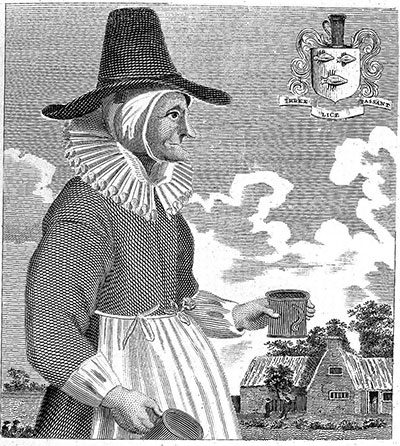 Mother Louse, an alewife in Oxford, England during the mid 17th century, by engraver David Loggan.
Mother Louse, an alewife in Oxford, England during the mid 17th century, by engraver David Loggan.But these women were no witches; they were brewers.
They wore the tall, pointy hats so that their customers could see them in the crowded marketplace. They transported their brew in cauldrons. And those who sold their beer out of stores had cats not as demon familiars, but to keep mice away from the grain. Some argue that iconography we associate with witches, from the pointy hat to the cauldron, originated from women working as master brewers.
Just as women were establishing their foothold in the beer markets of England, Ireland and the rest of Europe, the Reformation began. The religious movement, which originated in the early 16th century, preached stricter gender norms and condemned witchcraft.
Male brewers saw an opportunity. To reduce their competition in the beer trade, some accused female brewers of being witches and using their cauldrons to brew up magic potions instead of booze.
Unfortunately, the rumors took hold.
Over time, it became more dangerous for women to practice brewing and sell beer because they could be misidentified as witches. At the time, being accused of witchcraft wasn’t just a social faux pas; it could result in prosecution or a death sentence. Women accused of witchcraft were often ostracized in their communities, imprisoned or even killed.
Some men didn’t really believe that the women brewers were witches. However, many did believe that women shouldn’t be spending their time making beer. The process took time and dedication: hours to prepare the ale, sweep the floors clean and lift heavy bundles of rye and grain. If women couldn’t brew ale, they would have significantly more time at home to raise their children. In the 1500s some towns, such as Chester, England, actually made it illegal for most women to sell beer, worried that young alewives would grow up into old spinsters.
Men still run the show
Men’s domination of the beer industry has endured: The top 10 beer companies in the world are headed by male CEOs and have mostly male board members.
Major beer companies have tended to portray beer as a drink for men. Some scholars have even gone as far as calling beer ads “manuals on masculinity.”
This gender bias seems to persist in smaller craft breweries as well. A study at Stanford University found that while 17% of craft beer breweries have one female CEO, only 4% of these businesses employ a female brewmaster – the expert supervisor who oversees the brewing process.
It doesn’t have to be this way. For much of history, it wasn’t.
Editor’s note: This article has been updated to acknowledge that it isn’t definitively known whether alewives inspired some of the popular iconography associated with witches today. It has also been updated to correct that it was during the Reformation that accusations of witchcraft became widespread.
Books About Women Brewers and Books Starring Mighty Girl Witches
A Woman's Place Is in the Brewhouse
A Forgotten History of Alewives, Brewsters, Witches, and CEOs
A Woman's Place Is in the Brewhouse
A Forgotten History of Alewives, Brewsters, Witches, and CEOs
For millennia, brewing has been "women's work" — part of the litany of tasks that fell under the category of managing a household. So why is brewing often male-dominated today? In this intriguing book, author Tara Nurin shows how whenever brewing became profitable — when it became a business instead of a chore — men would take control, pushing women out of roles that gave them independence and economic power. But today, women are starting to take back the brewing industry, with over 1,000 American brewers where women serve as founder, CEO, or head brewer. This insightful and empowering book will make you look at a frosty bottle of beer in a whole new way.
Strega Nona
Strega Nona
In her Calabrian town in Italy, Strega Nona — "Grandma Witch" — is the person to see for potions, cures, and comfort for anything that ails you. And, of course, everyone knows about her ever-full pasta pot! When Strega Nona leaves her house in the charge of Big Anthony for a day, he's so hungry he decides to try the pasta spell himself. Unfortunately, Big Anthony doesn't quite have the knack of it and it will be up to Strega Nona to save the day! dePaola's vivid illustrations make this beloved classic a treat for young readers!
Backyard Witch: Sadie's Story
Backyard Witch: Sadie's Story
Sadie has two best friends — but when both of them go on vacation together, Sadie is left behind and heartbroken. Then, she makes a startling discovery: a witch has moved into her backyard playhouse! Ms. M is no ordinary witch: her magic is based on nature and inspiration, not potions and wands, and she's an avid birder. But with Ms. M's friends Onyx the cat and Ethel the bird missing, she needs a little extra help — and Sadie fits the bill. It's the start of an adventure that will teach Sadie about birds, magic, and the wonder that surrounds her seemingly ordinary life. This charming early chapter book, the first of a planned series, will teach young readers about common bird species and get them thinking about the natural world that surrounds their own home.
Witches of Brooklyn
Witches of Brooklyn
When 11-year-old Effie's mother dies, she finds herself on the doorstep of her elderly aunt Selimene and her partner, Carlota, acupuncturists and herbalists who serve their Brooklyn neighborhood. While the pair welcome Effie in, she can't help but feel like things will never be normal again... and it turns out that she's right. Just as she's settling into school and maybe even making friends, her favorite singer shows up at Selimene's door seeking magical help! It turns out that Selimene and Carlota are both witches — could Effie be one too? This delightful graphic novel combines real-world challenges with magical adventure that celebrates found family and the power of helping others.
Kiki's Delivery Service
Kiki's Delivery Service
Fans of Kiki's Delivery Service will be delighted to read this new translation of the book that inspired the Studio Ghibli film! Half-witch Kiki is ready to follow the witch tradition of choosing a new town to call home for one year after her thirteenth birthday. But the village of Koriko is not as welcoming as she might have hoped, and the villagers aren't so sure about her idea to use her witch's powers to help them. It takes some determination, but slowly, Kiki makes friends in her new home... and realizes that there's magic in every day, ordinary places, too. This brand new translation of the first book in the Kiki series will delight readers young and old!
The Power of Poppy Pendle
The Power of Poppy Pendle
In Poppy's world, witches work for good and are treated with respect and honor so when Poppy, whose parents are not witches, develops powers, they are thrilled. Poppy, on the other hand, is not: all she wants to do is become a great baker. Her parents push her into magic despite her protests, and soon Poppy is exploring some dark paths out of frustration and resentment. Fortunately, friendship and good food win out in the end! Poppy is a sympathetic characters and readers will empathize with a tween who expresses her anger in inappropriate ways (and enjoy the included recipes!) Fans of this story can find more stand-alone stories set in Poppy's magical world in our Poppy Pendle Collection.
The Witch of Blackbird Pond
The Witch of Blackbird Pond
Kit Tyler is heartbroken when she has to leave her beloved Barbados to join an aunt and uncle she's never met in 1687 Connecticut. And from the moment she arrives, she is the topic of disapproval and suspicion: in their Puritan community, a girl like Kit who swims and dares to talk back to her elders might get labeled a witch. And when Kit finds a kindred spirit in Hannah Tupper, a Quaker woman known as the Witch of Blackbird Pond, she suddenly finds herself facing witch hysteria and a mob mentality with nothing but a sense of truth and justice. This Newbery Medal-winning novel provides a stirring exploration of witch hysteria in early colonial America and the power of courageous individuals to stand up to mob mentality.
The Wee Free Men
The Wee Free Men
Terry Pratchett brings his Discworld witches to younger readers with his series about budding witch Tiffany Aching. In The Wee Free Men, nine-year-old would-be witch Tiffany finds herself desperately seeking witch magic to defend her home — and her pesky little brother — from the denizens of Fairyland. It turns out that Tiffany, who's intelligent, determined, and has a talent for cheese, also has a gift for being a witch. Tiffany's story continues in A Hat Full of Sky, Wintersmith, I Shall Wear Midnight, and Terry Pratchett's final Discworld novel, The Shepherd's Crown — in which Tiffany comes into her own as a fully independent witch. With plenty of adventure, humor, and heart, this action-packed and thought-provoking series will bewitch readers young and old alike!
![]()












